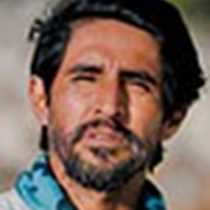Santa Cruz
This is the second largest island and also the most inhabited, so therefore it’s the center of commercial and tourism activities. It is an obligatory stop for all tourists that come to visit this beautiful corner of the world. The Charles Darwin Research Station is based here and has for many years worked together with Galapagos National Park running conservations projects destined to protect the local unique resources.
We left our ship to go to a very special place in the town of Puerto Ayora, to get to know more about this.
One of the most prominent projects is the Giant Tortoise Breeding and Rearing Center that includes several island tortoise species with the intention of bringing numbers up from decline due mainly to predation over the last two centuries.
Another similar project includes another species of tortoise known as the Saddleback, whose best representative is a male tortoise nicknamed “Diego” who once lived in the San Diego Zoo. He had to be returned to Galapagos to join the only others survivors of his species, twelve females and two males, and together they have procreated more than one and a half thousand tortoises since the 1970’s. Today many of them are back on their island breeding on their own, making this one of the most successful programs conducted by these institutions since this all begun.
Diego is now the center of attention here, especially after Lonesome George sadly passed away last year.
After this very interesting walk we headed back through town where some had the opportunity to do some shopping in the local galleries with very interesting handcrafts. They are made by the hands of skilled people from different regions of Ecuador who have moved to Galapagos, making it a multicultural place.
After this visit we gathered up in town before making our way to the highlands by bus to reach a farm where we learned the fine craft of making liquor, panela and melaza out of sugar cane, and also the process of roasting coffee and putting these two things together for delicious results.
On our way to the restaurant for lunch some decided to travel in different ways like jogging, bike riding, or on the bus. After a good meal we hopped back on the buses and continued on our way to the Giant Tortoise Reserve to meet these enigmatic creatures, this time in their own natural state. It just couldn’t get any better, they were everywhere and all of us enjoyed their reluctance to us, acting as if we just weren’t there.
Soon they leave the highlands to move to lower elevations where they can find good soil to bury their eggs and good energy for the incubations, which go on for some three to four months.
Another thing that attracted our attention was a formation called a lava tube, whose mysterious inside reveals its volcanic nature and makes the adventure more exciting. It is necessary to use flashlights inside, and in one of the many tubes there was a barn owl roosting although it was hard to take pictures of it as we cannot use camera flash to avoid disturbing animals. With all this activity and the amazing greenery all around the area we were ready to go back to town and from there do a little more of walking or shopping. It was another great day in the Galapagos.




